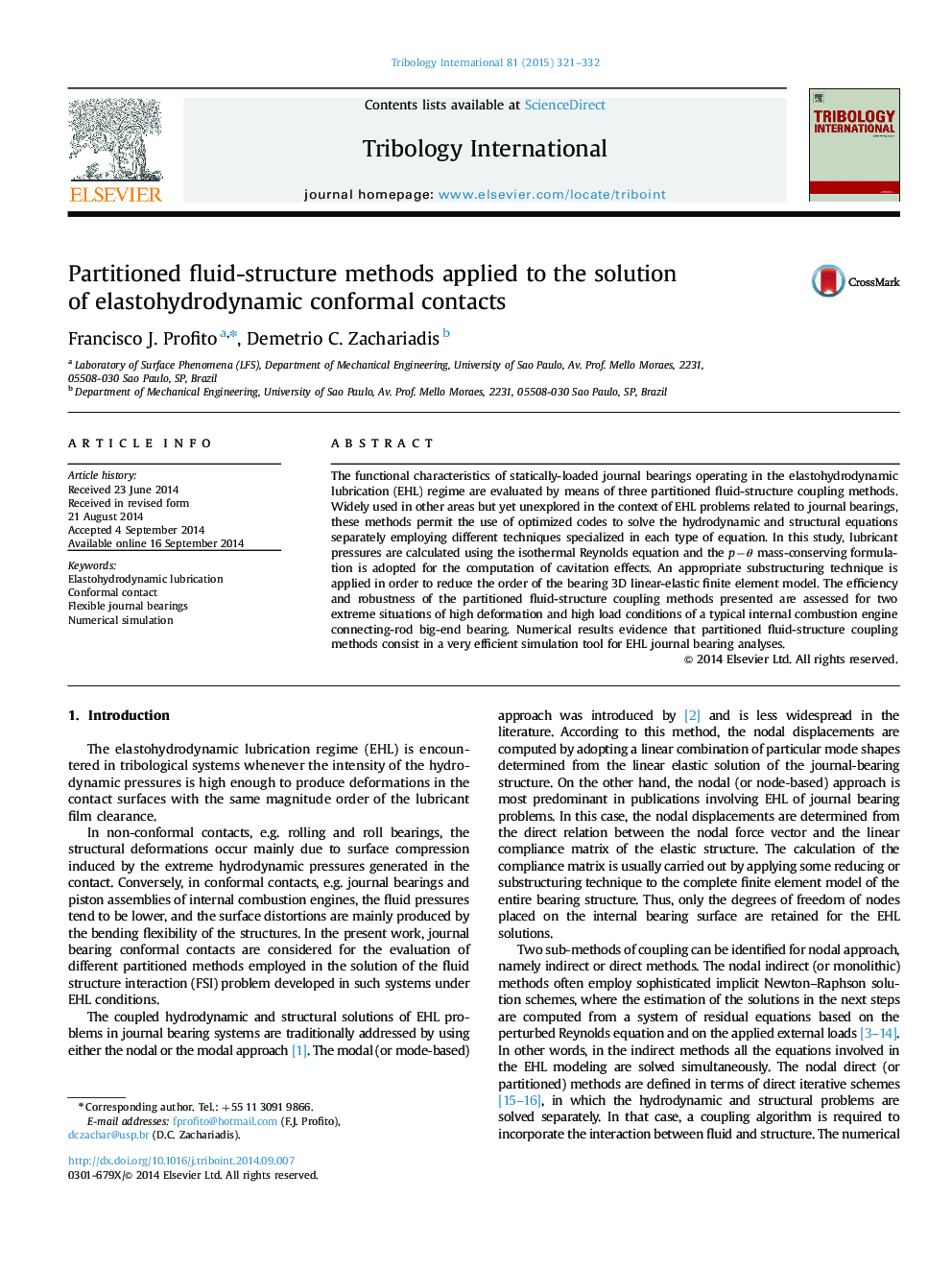| Article ID | Journal | Published Year | Pages | File Type |
|---|---|---|---|---|
| 7003213 | Tribology International | 2015 | 12 Pages |
Abstract
The functional characteristics of statically-loaded journal bearings operating in the elastohydrodynamic lubrication (EHL) regime are evaluated by means of three partitioned fluid-structure coupling methods. Widely used in other areas but yet unexplored in the context of EHL problems related to journal bearings, these methods permit the use of optimized codes to solve the hydrodynamic and structural equations separately employing different techniques specialized in each type of equation. In this study, lubricant pressures are calculated using the isothermal Reynolds equation and the pâθ mass-conserving formulation is adopted for the computation of cavitation effects. An appropriate substructuring technique is applied in order to reduce the order of the bearing 3D linear-elastic finite element model. The efficiency and robustness of the partitioned fluid-structure coupling methods presented are assessed for two extreme situations of high deformation and high load conditions of a typical internal combustion engine connecting-rod big-end bearing. Numerical results evidence that partitioned fluid-structure coupling methods consist in a very efficient simulation tool for EHL journal bearing analyses.
Related Topics
Physical Sciences and Engineering
Chemical Engineering
Colloid and Surface Chemistry
Authors
Francisco J. Profito, Demetrio C. Zachariadis,
